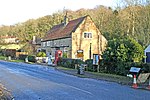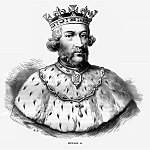Ampleforth railway station
Disused railway stations in North YorkshireFormer North Eastern Railway (UK) stationsPages with no open date in Infobox stationRailway stations in Great Britain closed in 1950Railway stations in Great Britain opened in 1853 ... and 1 more
Use British English from February 2018

Ampleforth railway station, served the village of Ampleforth, in the Northern English county of North Yorkshire. It was located on a line which ran from Pickering to the East Coast Main Line at Thirsk. The station was close to the noted Ampleforth College although passengers for the college used the station at Gilling further east as this was more convenient for onward transfer to the college.
Excerpt from the Wikipedia article Ampleforth railway station (License: CC BY-SA 3.0, Authors, Images).Ampleforth railway station
Thorpe Lane,
Geographical coordinates (GPS) Address Nearby Places Show on map
Geographical coordinates (GPS)
| Latitude | Longitude |
|---|---|
| N 54.183 ° | E -1.1207 ° |
Address
Thorpe Lane
Thorpe Lane
YO62 4DL , Ampleforth
England, United Kingdom
Open on Google Maps









